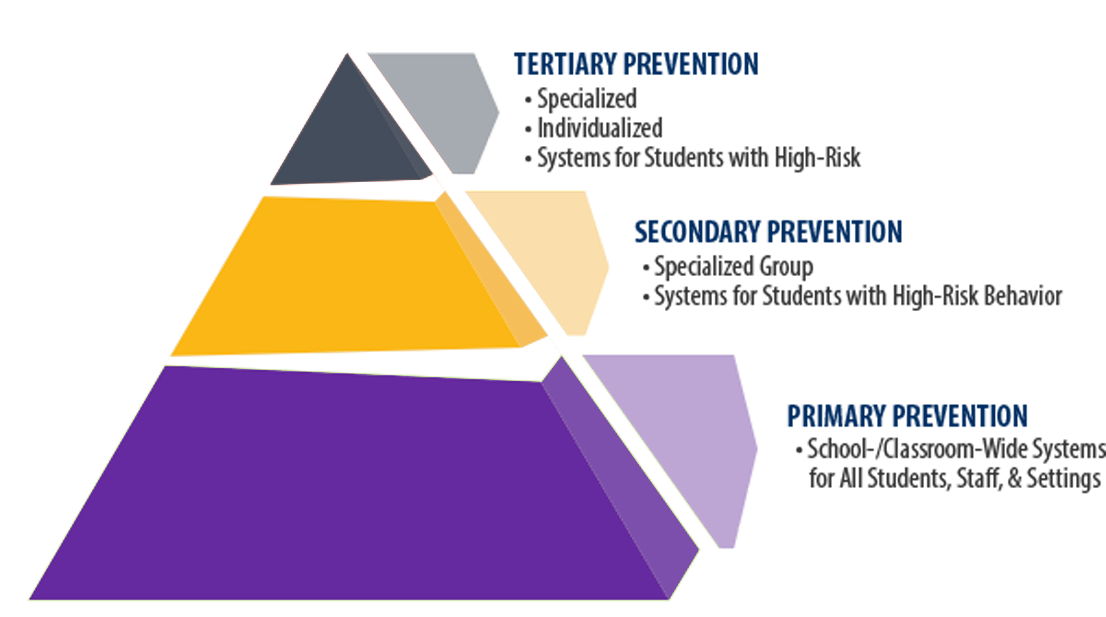Schools are at the frontline of the student mental health crisis. It’s no secret that youth mental health is a top priority for educators--and one that can have a dramatic impact on academic outcomes. Interventions for at-risk students are often triggered when teachers spot signs of academic, behavioral, or mental health problems--such as poor grades, bullying, absenteeism, being withdrawn, or acting out in class.
Increasingly, schools are implementing the MTSS (Multi-Tiered System of Support) framework to create a more holistic, evidence-based way to prevent problems and help struggling students succeed.
What is the MTSS Framework?
The short answer is that the goal of MTSS is to help educators proactively identify struggling students, assess their needs, and provide the right supports to all students in the school.
Evidence-Based Practices
One critical aspect of MTSS is its evidence-based practices. More specifically, it promotes data-driven decision-making, progress monitoring, supports, and strategies with increasing intensity as needed to sustain student growth.
Integrated, Schoolwide Approach
MTSS is not just about tiered intervention. Equally important is how all the systems in a school or district fit together to ensure the right support. This schoolwide approach calls upon teachers, counselors, psychiatrists, and other specialists to join forces to assess each student and create an integrated plan that supports their academic, behavioral, social, and emotional needs. Families and caregivers should also be involved so they can understand the interventions and give support at home.
Focus on Professional Development
A crucial part of MTSS is the emphasis on professional development so that school staff can most effectively:
- Recognize signs of mental health and other issues
- Plan and provide targeted interventions
- Monitor progress more frequently
- Determine if struggling students need more interventions, possibly moving them to the next highest tier.
School Culture
MTSS goes beyond individual student’s mental health. Part of the MTSS approach is putting the child and youth mental health on everyone’s radar, encouraging the entire school community to be active participants in caring for themselves and all those around them. A positive school culture helps make children feel safe and nurtured.
Identifying the Appropriate Level of Support for Each Student
What most clearly defines MTSS is its three-tiered structure, where interventions become more intense from one level to the next based on the student’s changing needs. Here is a description of the three tiers and examples of intervention for each.

Tier 1: Primary Intervention
The first level of intervention is called primary or universal prevention. This preventive level of support is delivered to all students through modifications in the school environment. When implemented well, potentially fewer students will need additional Tier 2 services.
Some areas that Tier 1 strategies can address include:
- Social, communication, and relationship Schools
- Organizing school work and completing tasks
- Acting according to articulated school values
- Staying on task and following directions
- Relaxation and coping skills
Tier 2: Secondary Intervention
This secondary level of intervention focuses on providing an early response to students who show initial signs of difficulty and are non-responsive to Tier 1 classroom supports. Tier 2 interventions typically support approximately ten to 25 percent of the student population—those at risk but not currently engaging in severe problems. Signs that Tier 2 interventions may be appropriate include (but are not limited to) poor academic achievement, behavior management problems, tardiness, office referrals, and absences.
Examples of Tier 2 supports, most often delivered in small groups, include:
- Specialized instruction or social skills development in a small group setting
- Check-in/check-out to provide positive daily contact with an adult at school
- Student or adult mentoring provides a positive role model and promotes attachment to the school
- Setting-based intervention, such as a structured recess
Take-a-break to decompress, pause, and regulate a disruptive student’s emotions and behaviors
Tier 3: Tertiary Intervention
Tier 3 is the most intensive level, with more individual interventions on top of the supports provided by Tiers 1 and 2. These interventions, delivered to approximately one to five percent of the student population, focus on rehabilitation and minimizing the risk of recurrence of mental health problems or behavioral episodes for students who have already experienced one or more behavioral crises. Objectives are not only to diminish the problem behavior but also to increase the student’s adaptive skills and opportunities for an enhanced quality of life.
Examples of Tier 3 supports include:
- Individual and/or family counseling
- Interagency case management
- Referral for special education services
- Housing and food stability supports
When a student needs additional interventions, moving to Tier 2 or Tier 3, the new supports are added to (not in place of) the previous, less-intensive intensive tiers.
MTSS Offers as a Proactive Approach to Help Meet Every Student’s Needs
MTSS is gaining momentum as an alternative for the identification and intervention of struggling students. The promise of MTSS is the use of increasingly intensive, research-based supports delivered using a systemwide, integrated approach to help every student achieve academic success. STOPit Solutions offers an app-based support system that can play an integral role in effectively implementing your school or district’s MTSS framework.



